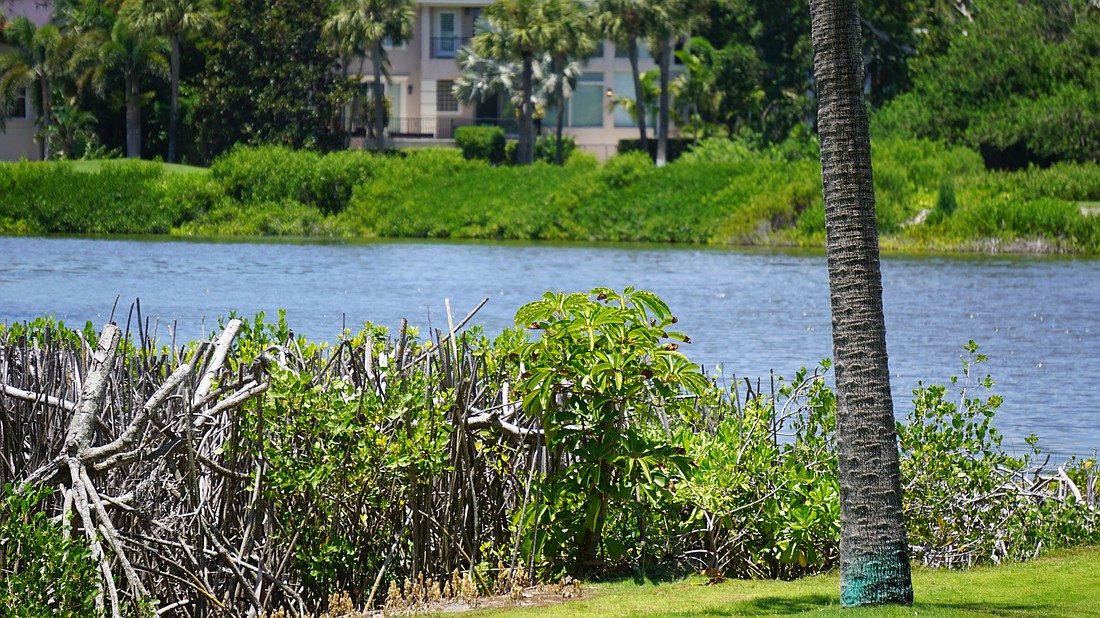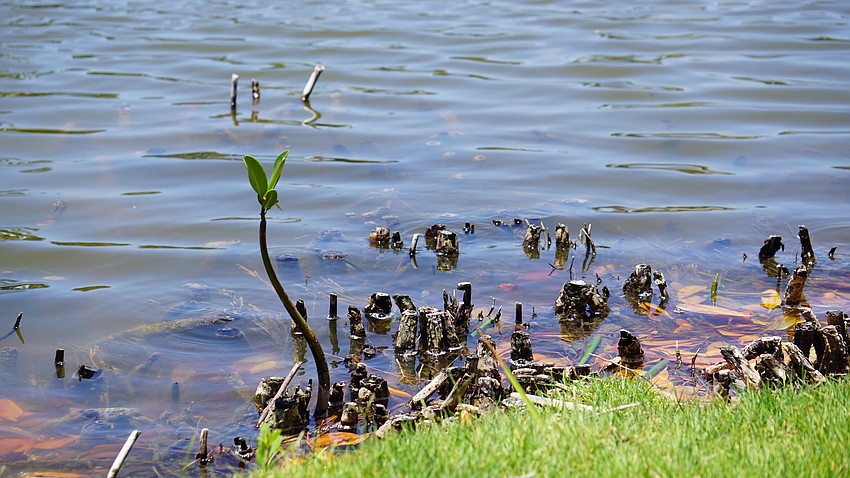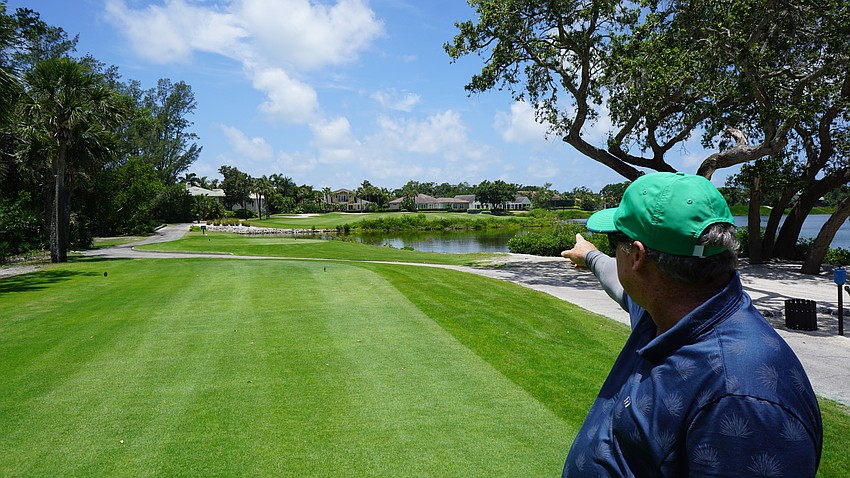- July 15, 2025
-
-
Loading

Loading

An investigation from the Florida Department of Environmental Protection was recently opened in response to people concerned with mangrove trimming conducted two years ago at the Longboat Key Club. But the regulations and permitting for mangrove trimming may be more complicated than simple right or wrong.
Mangroves are important hubs of biodiversity for estuaries like Sarasota Bay, so how much and when mangroves can be altered is a complex conversation between multiple stakeholders.
“Mangroves have been a big issue for us because we’re seeing a lot of illegal trimming going on, and we don’t see much enforcement,” said Rusty Chinnis, board chair of Suncoast Waterkeeper, a nonprofit that strives to protect Florida’s environment through advocacy and enforcement.
“The Florida Department of Environmental Protection is currently investigating reports of unauthorized mangrove alteration at the Longboat Key Club,” DEP Press Secretary Brian Miller said. “DEP inspectors have been on-site to perform a preliminary inspection and are in the process of finalizing their inspection report.”
According to Chinnis, Suncoast Waterkeeper can act as a middleman. People who see environmental situations worth reporting, good or bad, can send those reports to the organization. If it’s seen as a violation, such as pollution in a river or mangroves trimmed too short, Suncoast Waterkeeper can further the report. In this case, Chinnis said his organization reported the mangrove trimming to the DEP.
John Reilly, director of agronomy, has been with the Longboat Key Club for 15 years. In his position, he oversees landscaping and projects such as the honey bee hives and composting. According to Reilly, the mangrove trimming done on the Longboat Key Club grounds was legal. The club has the correct permits, and it contracted a professional mangrove trimmer — Suncoast Environmental Group.
“Everything we did was thoughtful in our approach,” Reilly said.
The main dispute now is seen on the club's Blue golf course's Hole 4. There, the mangroves two years ago were “flush cut,” or cut so that they meet the water level. A manmade pond separates the fairway and a row of houses. The mangrove roots are still intact; they have not been excavated, Reilly said.

All in all, Reilly believes that the mangrove trimming was the best possible option for all stakeholders involved. When starting on the hole, the player drives the ball down the fairway. Before the mangroves were flush cut, players had a difficult time seeing where golf balls actually landed. That was the reasoning behind the trimming.
“This was so that the golfer could play the hole and enjoy it,” Reilly said.
While the main reason behind the trimming was to improve the golfer’s experience, Reilly said a possibly positive side effect was that now the homeowners across the pond have both a waterfront and golf view.
Other holes, like Blue Hole 3, utilize the mangroves in their landscaping. These mangroves have not been trimmed, but instead create a perfectly lined edge along the fairway.
“If it didn’t enhance the hole for the golfer, we let nature be,” Reilly said.

The DEP regulates mangrove trimming with the 1996 Mangrove Trimming and Preservation Act, which affords the plant certain protections. This act lays out regulations that must be followed when trimming. For all general permitted trimming, a professional mangrove trimmer is required. Professional mangrove trimmers are also recommended for individual exempt permits, though not required.
General permits, which are the most common, state that mangroves “may not be trimmed so that the overall height of any mangrove is reduced to less than 6 feet as measured from the substrate.”
Special exceptions are possible, but according to the DEP website, individual permits are required in order to trim mangroves below the general 6 feet.
According to Reilly, the club trims mangroves every year to the 6-foot line as permitted.
Two years ago was the last time they cut mangroves below that mark, in order to improve the line of sight for golfers. Since the pond adjacent to the mangroves is manmade, Reilly said any alterations fell under the jurisdiction of the Southwest Florida Water Management District. Trimming was seen as maintenance for the pond.
An email chain went on for months among the Longboat Key Club, Suncoast Environmental Group and the DEP prior to the trimming in question. The club had indicated that it and Suncoast Environmental Group saw the pond as stormwater runoff, so no permit was necessary in their view. They pointed to previous cases in which homeowners trimmed mangroves on their own properties in similar situations. The DEP was given a chance to respond but, according to Reilly, did not.

The term “mangrove” encompasses three distinct species: red, black and white mangroves. These trees are more than just vegetation, according to Sarasota Bay Estuary Program Executive Director Dave Tomasko.
“It’s not just a tree. It’s actually a habitat,” Tomasko said.
Mangrove ecosystems provide important nesting and resting grounds for birds, he said. The portions of the mangroves that are underwater also are hubs of biodiversity. Oysters that attach themselves to mangrove roots actively filter water. The root system itself provides habitats and safety for juvenile fish, which then work up the food chain to recruit larger fish.
The trees also protect shorelines and their properties from the impact of storms. While most areas don’t have enough to substantially reduce storm surge, Tomasko said, a lot of areas have enough mangroves to reduce wave height. This can ultimately lead to less property damage in the event of large storms.
Tomasko said mangroves deserve more credit.
“I think mangroves need to be given a lot of respect because they’re not just a nuisance to cut down to get a view of the water. When you have a Category 3 hurricane coming on shore, you might want to wish you had bigger mangroves,” Tomasko said. “I think we need to change our views of mangroves, to welcome into our landscape rather than view them as an obstruction to our view.”